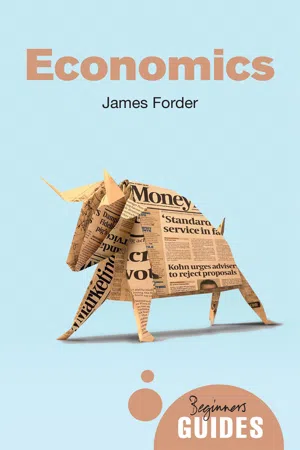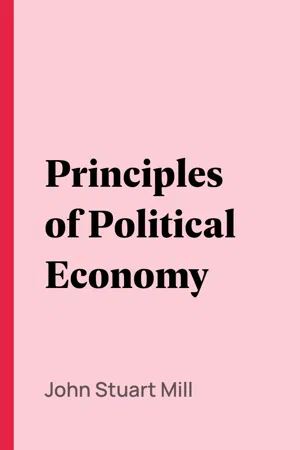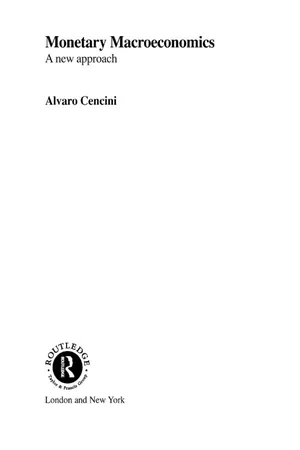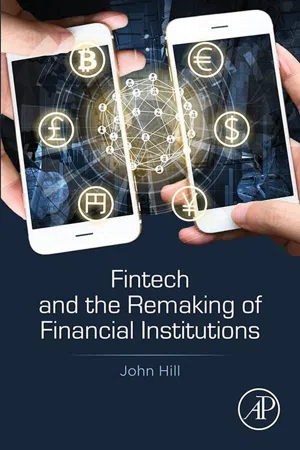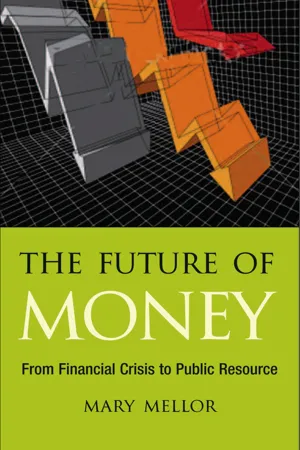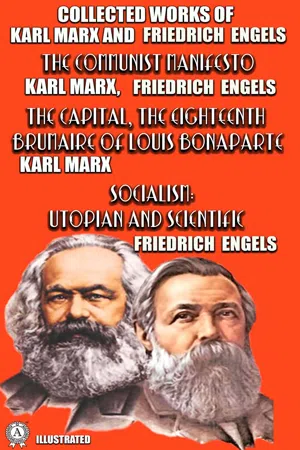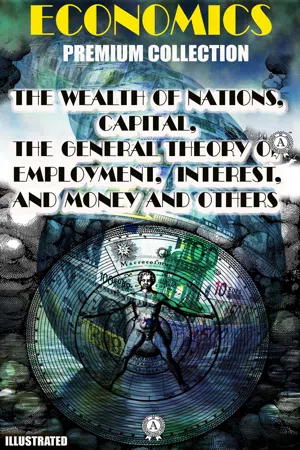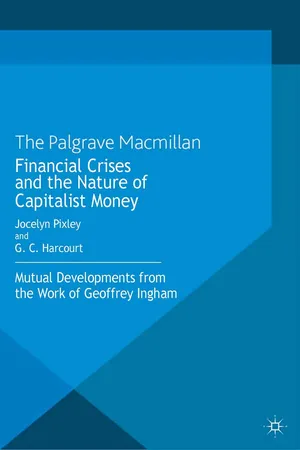Economics
Money as a Medium of Exchange
Money as a medium of exchange refers to its function as a widely accepted intermediary in transactions, allowing goods and services to be traded without the need for bartering. This facilitates the smooth exchange of goods and services, as individuals can use money to easily acquire what they need and want.
Written by Perlego with AI-assistance
Related key terms
12 Key excerpts on "Money as a Medium of Exchange"
- eBook - ePub
Economics
A Beginner's Guide
- James Forder(Author)
- 2016(Publication Date)
- Oneworld Publications(Publisher)
5 Money and banksSomething that might seem peculiar about the discussion so far is that there has hardly been a mention of money. It appears as a way of measuring prices, and perhaps as something that people like to make, but apparently not as an essential component of economics at all. Part of the explanation is that – as we shall see – although money is obviously an important aspect of the functioning of modern economies, there are large parts of economic analysis where it is not nearly so important as might be supposed. It does nevertheless raise some issues of its own – issues concerning the nature of money itself; what makes something ‘money’ rather than not money; where is it that money comes from; how it is related to economic activity; and what kind of policy actions might be called for, and when?Definition of moneyDefining money is a surprisingly difficult task. The first point, though, is that in ordinary English the word ‘money’ is certainly used more broadly than it is in economics. As I have just said, ‘money’ is sometimes treated as the thing that some people like to make. But that is not an economist’s usage. Really, what those people are seeking is wealth, or perhaps income. Similarly, we might say ‘Mr Gatsby has a great deal of money’ – but it would be unlikely to mean that his wallet was at that moment particularly full.Confusion is taken further when economics textbooks provide a list of the functions of money. It functions, they say, as a unit of account, a medium of exchange, and as a store of value. ‘Unit of account’ means the measuring rod of economic value – the units in which prices are quoted. A ‘medium of exchange’ (or ‘transactions medium’) is the device commonly used to make payments, and a ‘store of value’ is a way of taking the power to make purchases that we have today, and moving that power to purchase into the future. But those are the functions of money – they are what money does. They do not exactly tell us what money is - eBook - ePub
Principles of Political Economy
Abridged with Critical, Bibliographical, and Explanatory Notes, and a Sketch of the History of Political Economy
- John Stuart Mill, J. Laurence (James Laurence) Laughlin, (Authors)
- 2009(Publication Date)
- Perlego(Publisher)
Chapter IV. Of Money.§ 1. The three functions of Money—a Common Denominator of Value, a Medium of Exchange, a
“ Standard of Value ”.Having proceeded thus far in ascertaining the general laws of Value, without introducing the idea of Money (except occasionally for illustration), it is time that we should now superadd that idea, and consider in what manner the principles of the mutual interchange of commodities are affected by the use of what is termed a Medium of Exchange.As Professor Jevons 220 has pointed out, money performs three distinct services, capable of being separated by the mind, and worthy of separate definition and explanation:1. A Common Measure, or Common Denominator, of Value. 2. A Medium of Exchange. 3. A Standard of Value.F. A. Walker, 221 however, says:“ Money is the medium of exchange. Whatever performs this function, does this work, is money, no matter what it is made of.... That which does the money-work is the money-thing. ”(1.) [If we had no money] the first and most obvious [inconvenience] would be the want of a common measure for values of different sorts. If a tailor had only coats, and wanted to buy bread or a horse, it would be very troublesome to ascertain how much bread he ought to obtain for a coat, or how many coats he should give for a horse. The calculation must be recommenced on different data every time he bartered his coats for a different kind of article, and there could be no current price or regular quotations of value. As it is much easier to compare different lengths by expressing [pg 287] - eBook - ePub
- Shahzavar Karimzadi(Author)
- 2012(Publication Date)
- Routledge(Publisher)
7 Money originated from its functionsIntroductionIt is a customary convention of almost every economics textbook to open the subject of money by examining its essential definition. The definition most certainly revolves around one or a mixture of the functions of money. The function that cannot escape almost any definition of money is the medium of exchange. This function is inseparable from the theory of the origin of money regardless of whatever definition is being used. When combined with other functions, it can either be the dominant or the subordinate function. That is typically specified either explicitly or implicitly depending on the author’s preference as to the overriding function.Money is a contingent factual entity. It is a social and economic necessity that emerged with specific social and economic conditions. Its necessity discerns no universal law. In view of this reality then one cannot come up with a universal definition of money. The very term “define” presupposes the predicate of universality. A definition of money which can be applied everywhere and all the time is doomed to failure. Moreover, the definition of money that is not constructed from its functions would be no more than a verbal contortion. It remains in concepts that are empty of content. This is why economists either knowingly or subconsciously define money in the context of what money actually does rather than what money actually is. The definition of money then is presented as a description of its functions. Relying on the description of the functions of money leaves room for greater flexibility in case of changing economic environment and the formation of new forms of money.Defining money from its functions liberates it from its abstract form. It is much easier to describe what a form of money does rather than to give an abstract definition of it. An abstract definition that is used in all possible worlds would not last long. The possible worlds are not the same and keep changing. The four functions of money that are more or less commonly acknowledged in textbooks are the functions of money as a unit of account, a medium of exchange, a store of value and as a standard for deferred payments. The origin of money is linked to one or combination of these functions. Chapter 7 - eBook - ePub
- John Roscoe Turner(Author)
- 2019(Publication Date)
- Routledge(Publisher)
11 Political Economy, Advanced Course, p, 123.Some writers say that money must be of full commodity value, but the above definition pays no regard to what money is made of, says nothing of the exchange power of the commodity used to make money. It defines money in terms of what money does—it would know the doer by what it does. It would include all media of exchange whether paper or coin—it is enough that it be generally acceptable. It would not include checks, because they are not generally acceptable, do not pass freely from hand to hand, are not accepted without reference to the character or credit of the person offering them. The definition is not burdened with overrefinement, it corresponds to popular usage, and is workable.6. Functions of Money.What does money do? To answer this question is to give the functions of money. To serve as a common medium of exchange is its primary function, other functions are derivative from this. A pen or a watch performs a specific service and is wanted for no other purpose. Money likewise is a simple tool desired for the one purpose of making exchanges and none other. Money is no mysterious thing, no mystic principles veil or obscure it; it is a tool for making exchanges, just as a hammer is a tool for driving nails.Money is a standard or common denominator of value or, more accurately, a standard of the relative prices of goods. This is a derived function, although many writers class it with the first-mentioned, and speak of these as the two primary functions. This error is easily disposed of, for a thing could not serve as a standard of value unless it be a medium of exchange. Strictly speaking, money is not a standard of value as between persons. It would be a curiously poor yardstick, which is two feet long in one man's hands and ten feet long in the hands of another. But something comparable to this is true in the case of the dollar, for it reflects large marginal desirability for the poor and little for the rich. Considered from the standpoint of one person, the dollar does serve as a measure of the comparative worth of different commodities. The individual measures the relative valuations of corn and wheat by bringing these in comparison with the value he attributes to a unit of money. If for him the marginal desirability of a bushel of corn and the alternative use of a dollar are equivalent, while the marginal desirability of a bushel of wheat would be the equivalent of two dollars, he would here have measured the values attributed to two commodities, finding the one to be double that of the other. As between persons, however, money serves simply as a measure of price. - eBook - ePub
Paper Money Collapse
The Folly of Elastic Money
- Detlev S. Schlichter(Author)
- 2014(Publication Date)
- Wiley(Publisher)
First, the proposal introduces multiple parallel monies, which is suboptimal and costly, and the public may thus reject it. A society with multiple media of exchange does not realize the full advantages of using money. The coexistence of multiple monies partially defeats the very purpose of having a medium of exchange in the first place. Money is more useful to its owner the more transactions it can facilitate instantly, without, for example, having to be exchanged for something else first. The more widely accepted a medium of exchange is, the more valuable and useful it is to its owners and society overall. This is precisely the reason why, historically, trading communities have exhibited a strong tendency toward adopting the same commodity as money. Because of money’s considerable network effects, market forces will tend toward the establishment of one money, rather than a multitude of different currencies. A universally accepted medium of exchange that facilitates any transaction between anybody in the world would, of course, be the optimal currency. In that respect, gold was the first, and has so far been the only, practically global medium of exchange.A look at today’s world-spanning patchwork of local state paper monies can illustrate this point. From a global perspective, markets are today partially segregated by the use of multiple state fiat monies, each of which enjoys regional dominance due to the state monopoly of issuance, legal tender laws, and long-standing history of local use. This monetary arrangement reintroduces an element of barter into international market exchange, an undoubtedly suboptimal arrangement.If, for example, someone earns an income in the United Kingdom in pounds but wants to spend part of it in the United States, that person has to find somebody who wants to do exactly the opposite. Only then can he exchange some of his pounds for dollars. We meet here again a form of “double coincidence of wants” that characterized the barter economy. This would not be necessary if both countries used the same form of money, or if they were at least on an identical commodity standard, such as a true gold standard, in which pounds and dollars were simply defined as specific units of gold. Then, money could flow from one country to another, similar to the way in which it flows today from one region to another region within the same country or currency area. This is how money facilitated international trade under a gold standard. - eBook - ePub
- Alvaro Cencini(Author)
- 2001(Publication Date)
- Routledge(Publisher)
Is exchange a relation between commodities, between individuals or between money and output? According to traditional general equilibrium (GE) theorists, (relative) exchange is a relation among commodities, goods and services being exchanged directly on the commodity market. According to Ostroy and Starr (1989), on the contrary, exchange is a transaction requiring the intervention of money, which can be better understood if it is perceived as a relation between individuals. In the examples to which they refer, money is a veil (as they themselves recognise; ibid.: 12), a record-keeping device or a book-keeping transaction medium. One of the ideas put forward by Ostroy and Starr is that money can play the role of a medium of exchange only if it is a store of value, i.e. only if it has a positive value equivalent to that of the commodities exchanged with it. The sale of commodity a would thus imply its exchange for a sum of money of the same value (Figure 2.1).Figure 2.1 Sales as a relative exchange. Figure 2.2 Purchase as a relative exchange. By analogy, the purchase of commodity b would imply the transfer of an equivalent sum of money (Figure 2.2).The initial seller of commodity a becomes the purchaser of commodity b, and the two transactions lead to the relative exchange of commodity a against commodity b. In general, money is seen as a medium of exchange linking a seller with a buyer under a temporal sequence of constraints.At this stage, two interpretations seem possible. It might be claimed either that money is itself an asset similar to the goods it is exchanged with, or that money is a mere device with no intrinsic value whatsoever. In the first case, exchange between money and current output would pertain to the category of relative exchange, and we would find ourselves within the world of GEA. In the second case, it would be impossible to explain how money might take the place of the real goods it is exchanged with. This is obviously not what Ostroy and Starr have in mind when they define exchange as a relation between individuals. Their idea is that money has a positive value, and that it is precisely because it has such a value that transactions occur between individuals. This is an important suggestion, which has to be pushed to its extreme consequences, one of them being that money can no longer be considered as a commodity. Obviously enough, if money were a commodity, exchange would resume bartering: a relation between commodities. If exchange is a relation concerning individuals, then money must have a positive value without being a commodity. But if money has a positive value, does this not necessarily imply that money must (at least eventually) become a real good? Hence, given that not only goods and services but also financial bonds pertain to the category of real goods, how is it that money is and is not - John Hill(Author)
- 2018(Publication Date)
- Academic Press(Publisher)
Chapter 3Money
A Medium of Exchange, Unit of Account, and Store of Wealth
Abstract
Money is a medium of exchange, a unit of account, and a store of value. Traditionally, it has been minted from metals, and later printed on paper. More recently, it exists as electronic entries on institutional accounts. It’s called a Dollar, a Pound, a Euro, a Yen. The payments function of money has progressed from hard currency to paper checks to plastic credit and debit cards. And now it enters a new fertile phase of Fintech disruption. Payments innovations such as Apple Pay, M-Pesa, Square, and Venmo are widely used. Cryptocurrencies such as Bitcoin and Ethereum have been developed with expanding ecosystems and ardent supporters. Skeptics are not so sure of the staying power of these digital currencies, but all agree that the underlying distributed ledger technology (blockchain is one type) holds great promise.Keywords
Bitcoin; blockchain; distributed ledger technology; Ethereum; ACH; cryptocurrency; Silk Road; Mt. Gox; ICO; DAO; Satoshi Nakamoto; Ripple; Adyen; Apple Pay; Square; Stripe; Venmo; Zelle; Zoop; AlipayIn ancient times, gold and silver represented money, as did seashells and other barter commodities. Eight-sided silver coins were minted in Spain in the late 16th century. These “pieces of eight” were widely accepted in Europe and Asia as well as the New World, and were legal tender in the United States until the Coinage Act of 1857. There is some speculation that the dollar sign ($) is derived from design elements on these coins. Dutch silver coins were also circulated in the early US colonies. These coins were called Leeuwendaalder or “lion dollar” and caused the term “dollar” to be freely used to describe currency.For most of its history, US coins and paper currency were backed by silver or gold. Now, however, like most government’s currency, the US dollar is not redeemable for gold. It has no intrinsic value. Such a currency is called “fiat money” and is only backed by faith in the issuing government. Its usefulness derives from the fact that it is widely accepted. The US dollar’s importance goes beyond its domestic uses as it serves as the world’s reserve currency and is used more often than any other currency in pricing products and services around the world.- eBook - ePub
New Approaches to Monetary Theory
Interdisciplinary Perspectives
- Heiner Ganßmann(Author)
- 2012(Publication Date)
- Routledge(Publisher)
commodities that are used as money) has conventional characteristics and this implies concordant mutual expectations on the part of individuals. An object is money because of individuals’ beliefs and expectations. As long as their beliefs and expectations do not change they keep on using the same commodity as a medium of exchange. Note that economists are commonly criticized for not acknowledging that money is a social fact. However, the contrary is true. From the economists’ perspective money is an institution, which needs to be supported by an existing – larger – set of institutions. It is true that economists commonly isolate their models from these background institutions. Nevertheless, their reconstruction of the emergence of a commonly accepted medium of exchange presupposes specific social relations where the selection of an object to serve as money is a convention. In general, the economics of the origin of money presents the origin of commodity Money as a Medium of Exchange as an unintended consequence of the interactions of dispersed, rational and self-interested individuals. That is, economic models show the logical possibility that concordant mutual expectations and beliefs are established through a learning process as an unintended consequence of the actions of individuals who are seeking to get the best trade. On the other hand, the same literature shows that fiat money (money stuff that has no intrinsic value) could not be considered as an unintended consequence of human action. That is, according to economists there is room for design (and a role for state) in the long history of money (for a survey see Aydinonat 2008: Chapter 6). But note that such concordant mutual expectations and beliefs concerning Money as a Medium of Exchange or as a unit of account could also be established by the intervention of a state or a ruling authority as long as individuals also believe in this authority and expect that state-introduced money will be widely accepted - eBook - ePub
The Future of Money
From Financial Crisis to Public Resource
- Mary Mellor(Author)
- 2010(Publication Date)
- Pluto Press(Publisher)
1 WHAT IS MONEY?This is not a straightforward question. Money in its long history has been represented by many different things from precious metals, shells and beads to heavy, largely unmoveable stones. It has been made of substances that have value in themselves such as precious metals or represented by something that has no value in itself such as base metal coin or paper. Its operation has been represented in many ways from cuneiform tablets and tally sticks, to paper or electronic records. Conventional economics sees money as having a number of functions. It is a measure of value (a unit of account), a medium of exchange, a way of making deferred payments and a store of value. Money is seen as evolving with the market system. Barter is often assumed to be the original form of economic exchange with money emerging to solve the problem of finding suitable mutual exchanges. From this perspective, money is the product of pre-existing economic exchange.The chosen commodity needed to be valuable, durable, divisible and portable. Precious metals such as gold and silver were obvious choices. As a result, gold has been particularly resonant for modern conceptions of money. Gold is seen as having an inherent or intrinsic value and was adopted as a basis for money value until comparatively recently. From this ‘metallist’ perspective, the value of money still relates back to gold or some commodity that has intrinsic value although, in practice, money can be represented in many forms, such as base metal coin, paper or electronic record. This view of money leads to the assumption that money can only function effectively if it is scarce and valuable. Douthwaite argues that this view, based on the historical scarcity of gold and silver, has distorted economic theory ever since. It has led to the false idea that money can only be based on a scarce, and therefore valued, resource (1999:33). - eBook - ePub
Collected Works of Karl Marx and Friedrich Engels. Illustrated
The Communist Manifesto, The Capital, The Eighteenth Brumaire of Louis Bonaparte, Socialism: Utopian and Scientific
- Karl Marx, Friedrich Engels, N.I. Stone, Edward Aveling, Ernest Untermann, Austin Lewis(Authors)
- 2021(Publication Date)
- Strelbytskyy Multimedia Publishing(Publisher)
Chapter 28. Medium of Circulation and Capital; Views of Tooke and Fullarton
The distinction between currency and capital, as Tooke, Wilson, and others draw it, whereby the differences between medium of circulation as money, as money-capital generally, and as interest-bearing capital (moneyed capital in the English sense) are thrown together pell-mell, comes down to two things.(1)Currency circulates on the one hand as coin (money), so far as it promotes the expenditure of revenue , hence the traffic between the individual consumers and the retail merchants, to which category belong all merchants who sell to the consumers – to the individual consumers as distinct from productive consumers or producers. Here money circulates in the function of coin, although it continually replaces capital. A certain portion of money in a particular country is continually devoted to this function, although this portion consists of perpetually changing individual coins. In so far as money promotes the transfer of capital, however, either as a means of purchase (medium of circulation) or as a means of payment, it is capital. It is, therefore, neither its function as a means of purchase, nor that as a means of payment, which distinguishes it from coin, for it may also act as a means of purchase between one dealer and another so far as they buy from one another in hard cash, and also as a means of payment between dealer and consumer so far as credit is given and the revenue consumed before it is paid. The difference is, therefore, that in the second case this money not only replaces the capital for one side, the seller, but is expended, advanced, by the other side, the buyer, as capital. The difference, then, is in fact that between the money-form of revenue and the money-form of capital, but not that between currency and capital, for a certain quantity of money circulates in the transactions between dealers as well as in the transactions between consumers and dealers. It is, therefore, equally currency in both - eBook - ePub
Economics. Premium Collection. Illustrated
The Wealth of Nations, Capital, The General Theory of Employment, Interest, and Money and others
- Adam Smith, David Ricardo, Karl Marx, Alfred Marshall, John Maynard Keynes(Authors)
- 2021(Publication Date)
- Strelbytskyy Multimedia Publishing(Publisher)
Chapter 28. Medium of Circulation and Capital; Views of Tooke and Fullarton
The distinction between currency and capital, as Tooke, Wilson, and others draw it, whereby the differences between medium of circulation as money, as money-capital generally, and as interest-bearing capital (moneyed capital in the English sense) are thrown together pell-mell, comes down to two things.[1]Currency circulates on the one hand as coin (money), so far as it promotes the expenditure of revenue , hence the traffic between the individual consumers and the retail merchants, to which category belong all merchants who sell to the consumers – to the individual consumers as distinct from productive consumers or producers. Here money circulates in the function of coin, although it continually replaces capital. A certain portion of money in a particular country is continually devoted to this function, although this portion consists of perpetually changing individual coins. In so far as money promotes the transfer of capital, however, either as a means of purchase (medium of circulation) or as a means of payment, it is capital. It is, therefore, neither its function as a means of purchase, nor that as a means of payment, which distinguishes it from coin, for it may also act as a means of purchase between one dealer and another so far as they buy from one another in hard cash, and also as a means of payment between dealer and consumer so far as credit is given and the revenue consumed before it is paid. The difference is, therefore, that in the second case this money not only replaces the capital for one side, the seller, but is expended, advanced, by the other side, the buyer, as capital. The difference, then, is in fact that between the money-form of revenue and the money-form of capital, but not that between currency and capital, for a certain quantity of money circulates in the transactions between dealers as well as in the transactions between consumers and dealers. It is, therefore, equally currency in both - eBook - ePub
Financial crises and the nature of capitalist money
Mutual developments from the work of Geoffrey Ingham
- Jocelyn Pixley, G. Harcourt, G. Harcourt(Authors)
- 2013(Publication Date)
- Palgrave Macmillan(Publisher)
6 Once the economic magnitudes (quantities produced, quantities exchanged, ratios of exchange) have been determined by the theory of value, the question of the role of money is then posed retrospectively (Patinkin 1965 [1956]: xxiv). Walras did exactly the same, as Joseph Ostroy explains: ‘By introducing money after he had completed his theory of exchange, Walras clearly made monetary phenomena an optional add-on rather than an integral component of the mechanism of exchange’ (1987: 516). How is this ‘optional add-on’ explained? The main answer focuses on the process of the distribution of equilibrium allocations, by exchange, once prices and quantities have been established. Money is introduced here as a purely transactional technique enabling the distribution of available goods in accordance with equilibrium supply and demand, but in a decentralised way; that is to say, without going through the Walrasian ‘auctioneer’ (Ostroy and Starr 1990). As a mere instrument of exchange, money cannot have an impact on value or any feedback on price formation. Value is fundamentally independent of money, in nature and magnitude: money is ‘neutral’. In effect, to say that money is ‘neutral’ signifies that ‘the mere conversion of a barter economy to a money economy does not affect equilibrium relative prices and interest’ (Patinkin 1965 [1956]: 75). The transition of a barter economy to a money economy where nothing changes serves to underline money’s unimportance.Arguments that focus on money’s instrumental role in enabling decentralised transactions are also part of an older tradition which emphasises money’s role in overcoming the inefficiencies of barter. This is the famous ‘double coincidence of wants’: barter requires that the owner of good A , who wants to obtain good B , meets an individual in possession of good B and in search of good A . The difficulty of realising this double coincidence leads traders to substitute indirect for direct exchange. By using an intermediary good M for the exchange of A and B transactions, costs can be reduced, especially the delay in realising the exchange, if the good M is widely accepted (Jones 1976). This is so even if paradoxically the number of transactions increases: A – M then M – B instead of only A – B
Index pages curate the most relevant extracts from our library of academic textbooks. They’ve been created using an in-house natural language model (NLM), each adding context and meaning to key research topics.
